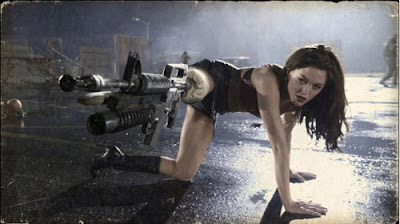Wednesday, 28 May 2008
I Live Here
I've returned to my lit-fic masterpiece (at least it is in my fantasy-fuelled head) and I've been fiddling with exposition. Here are my observations:
v1) No exposition: When I removed all detail from the scene and concentrated only on action and reaction, the scene became very disjointed and difficult to follow.
v2) Expected, bare-bones exposition: So I hurriedly rewrote the scene adding first-level consciousness details (that's to say, I wrote without any great consideration, allowing the descriptions to flow effortlessly and cliché-ily from my head). It made sense and flowed nicely and moved at a decent pace.
v3) Unexpected, bare-bones exposition: This is where I am now. With all the actions and reactions in place and the structure suspended at the desired pace, I was able to reconsider all the non-essential stuff (the details and descriptions) and fiddle with them. It was reasonably simple (and highly enjoyable) sifting through the layers of consciousness into those dark waters below and retrieve curious and unexpected and specific observations which give a scene a unique mood and create an acute sense of character.
But the most important observation I have made can be summed up by Sunset Bickham's remark:
'Write in the present for that is where the reader is.'
Sounds peculiar?
If we flow through real-time, we are naturally invited to have our protag open a door and step through the doorway into the hallway and close the door and turn and walk along the hallway ...
It can be a lot of description!
However, the very omission of such transitional material imbued my v1 scene with that zoetropic, strobing effect (the very technique I use when writing those adrenalin-drenched fight or flight scenes).
Bit of a dilemma then?
Robert Rodriguez did something very odd with his movie Planet Terror. With characters spread all over, each under threat, he stopped the movie and flashed up the words 'Missing reel', and then skipped straight to a scene in which all the characters had congregated together in a burning building.
This kept the pace roaring along, but it also upset me and it was some time before I was able to reimmerse myself into the movie, and even then my displeasure gnawed away in silent distaste.
The chapter I am writing replaces three transitory chapters in which I was originally concerned with exposition (probing into my protag's psyche, cross-referencing this with his past, and foreshadowing several dramatic events). Furthermore, this new chapter tackles two exciting events which I had initially planned to save for later (which was a foolish decision as it suggests that I couldn't think of enough exciting events to fill a novel). It is also a reasonably short chapter (a little under 2000 words).
One thing I have learned is that we do not need to stop the action in order to deliver information. If we are cunning, we can characterise and foreshadow - we can do all that expositional stuff - all without pausing for breath; we can weave any piece of information into any momentum-fired nugget of narrative. (Yes, with practise my confidence in this extremist belief is growing.)
But now I am faced with the potentially immersion-damaging effects of providing too little information. Bonding the reader to the protagonist in real-time is an extremely powerful tool for creating and sustaining immersion (suspension of disbelief).
Many more thoughts to come.
Labels:
writing
Subscribe to:
Post Comments (Atom)







No comments:
Post a Comment